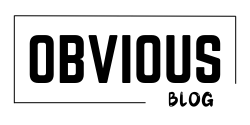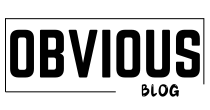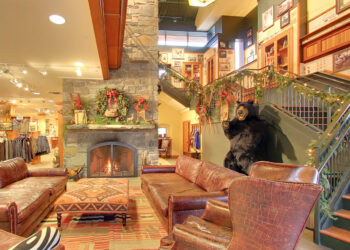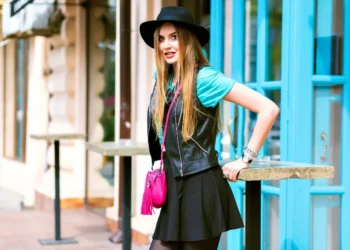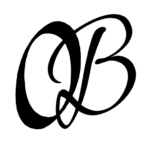What is the meaning of the term binding in the fashion industry? What are the uses of binding, and how does it create an impact on finishing a product? What are the different binding methods in fashion, and what is the role of binding in the fashion industry? Indeed, these are some questions that strike people who are involved in the fashion and clothing industry. So, in this article, we will clarify all the concepts. This article will be an informative ride for you discussing binding in fashion.
In the vibrant world of fashion design, binding refers to a versatile technique used to finish edges and seams of garments, providing both functional and aesthetic benefits. This process involves encasing raw edges with strips of fabric, typically cut on the straight grain or bias, to create a clean and polished look while reinforcing the garment’s structure. Binding not only prevents fraying and adds durability to the garment but also adds a decorative touch, enhancing the overall design aesthetic.
Whether applied to neckline edges, armholes, hems, or seams, binding can vary in width, fabric choice, and embellishments, allowing designers to customize their creations with intricate detailing and creative flair. From classic straight grain binding to more intricate bias binding techniques, binding in fashion serves as a fundamental skill that elevates the craftsmanship and quality of garments, showcasing the meticulous attention to detail inherent in the design process.

What Is Binding?
Binding is a term that is used in the fashion and clothing industry. Binding leads to finishing the borders of the products. In this process, of binding in fashion corners or the border of the fabric are sewn, glued, or waved to complete the uneven area of the borders. Thus, binding in fashion locks the edges of the neckline, arm holes, or any corner. Binding in fashion can be done using different methods like waweavingsewing, and bonding. Moreover, the binding in fashion can also be done using fabric tapes and buttons. Thus, it is up to you which type of binding in fashion you will use and which kind of binding is required of the cloth.
Binding in fashion plays a vital role in the fashion and clothing industries. It not only gives structure, shape, finishing, and neatness to the garment product but also helps enhance the beauty of the product. With some additional twist, the binding can work as an embellishments on clothes. You can try embroideries, stones, beads, and different materials for binding, which provide a unique and innovative shape to your garment. The binding in fashion can enhance the outlook of the product, make the product a perfect shape, and improve the beauty of the product.
Materials That Enhance The Beauty Of Binding
Different types of material can be used to bind clothes. The different kinds of choices are leather, cotton, linen, and tape, which can enhance the beauty and durability of the clothing. The proper material selection for a suitable fabric is a mandatory part of the binding. There are different types of options available for binding in fashion clothes. Still, you must idealize that with material that suits your design best. So, if it is a matter of the binding in the fashion of a t-shirt or a handbag, both requirements are different.
Thus, to make your article more beautiful, elegant, and captivating, it is necessary to bind it with the proper material. Leather is a good choice for binding. It is known for its durability. Leather makes things durable and protective. On the other hand, canvas and cotton are lightweight binding materials that are mostly known for their strong and protective binding. These materials are easy to find and use. In addition, if we talk about the material that looks stylish for binding in fashion, linen is a good option. This material is mainly used for clothing and dresses.
Types Of Binding
So, what are the different types of binding in fashion, and what is the specialty of each type? Let’s find out together. There are three types of binding in fashion that have unique features and specific implementations.
In the dynamic world of fashion, binding techniques play a crucial role in shaping garments and adding distinctive visual elements. One unique type of binding is known as “contrast binding.” This technique involves using a contrasting fabric or material to edge or trim the main garment, creating a bold and eye-catching detail. It can be applied to various garments, from dresses to jackets, to create a striking visual impact. Another notable binding method is “bias binding.” Unlike traditional straight binding, bias binding is cut on the bias of the fabric, allowing it to stretch and mold around curves more smoothly.
This technique is often used to finish raw edges or add decorative accents, providing a polished and professional look to garments. Additionally, “ruched binding” stands out as a distinctive binding style. Ruching involves gathering or pleating fabric to create texture and volume, and when applied to binding, it adds a unique three-dimensional element to the garment. Whether it’s through contrast, bias, or ruched binding, each technique offers designers and fashion enthusiasts an opportunity to elevate their creations with intricate detailing and visual interest.

Straight Grain Binding
The straight grain binding in fashion is made with stripes of fabric; these fabric strips are used to finish the corners or the edges of the fabric. The straight grain binding in fashion is mainly used for consecutive surfaces in which the parallel cut pieces of the fabric can be attached and make an elegant outline. This type of binding is used to lock the quilt mats, bags, or straight edges.
Straight grain binding is a lesser-known but highly effective binding technique in the realm of fashion design. Unlike bias binding, which is cut at a 45-degree angle to the fabric’s grain, straight grain binding is cut parallel to the fabric’s selvage edge. This method offers a structured and clean finish to garments, especially when working with woven fabrics. Straight grain binding is particularly advantageous for garments requiring a crisp and tailored look, such as collars, cuffs, and hems.
Its straight lines provide a sharp contrast against the fabric, adding a subtle yet refined touch to the overall design. Additionally, this technique is often favored for its ease of application and efficient use of fabric, making it a practical choice for both professional designers and DIY fashion enthusiasts. Whether used as a functional finishing detail or as a decorative accent, straight grain binding offers versatility and sophistication to fashion pieces, showcasing the meticulous craftsmanship and attention to detail inherent in the design process.
Cross Grain Binding
The cross-grain binding in fashion is made from cross-grain fabric. This type of binding in fashion is slightly diagonal in orientation. This diagonal orientation gives a stretch to the clothes. This type of binding is used for round-shaped surfaces and edges, like the armhole or the neckline of the clothing. The diagonal stripe can give the cloth a fine finish and an elegant look.
Bias Binding
This type of binding is also made with diagonal fabric pieces. The only difference is that the bias binding is cut at an angle of 45 degrees. This type of binding is used for the area where stretching plays a crucial role. The 45-degree cloth position gives the fabric extreme stretch and strength. This type of binding is used for the curved edges and corners.
In the realm of fashion design, bias binding stands out as a unique and versatile technique that offers numerous advantages. Unlike traditional straight grain binding, bias binding is cut at a 45-degree angle to the fabric’s grain, allowing it to stretch and mold around curves with ease. This inherent flexibility makes bias binding an ideal choice for finishing raw edges on garments with intricate shapes or curves, such as necklines, armholes, and curved hems.
Moreover, bias binding adds a distinctive and elegant touch to garments, creating visually appealing contrast and texture against the main fabric. Its ability to conform to curves seamlessly not only enhances the garment’s aesthetic appeal but also contributes to its comfort and wearability, ensuring a flattering fit for the wearer.
Advantages Of Binding
If you want to know about the benefits and advantages of binding, then binding is crucial for providing high-quality, premium-looking clothing.
In the realm of fashion design, binding serves as a versatile and essential technique with numerous advantages. One unique advantage of binding in fashion lies in its ability to add structural integrity to garments. By encasing raw edges with binding, designers ensure that the fabric remains stable and prevents fraying, extending the lifespan of the garment. Moreover, binding offers a polished and professional finish, elevating the overall aesthetic appeal of the piece. Another notable advantage is its versatility in design.
Bindings can be crafted from various materials, including contrasting fabrics, leather, or even unconventional materials like chains or beads, allowing designers to infuse creativity and personality into their creations. Additionally, binding serves as a functional and practical element in garment construction, providing reinforcement in areas prone to stretching or strain, such as necklines, armholes, and hems. This reinforcement enhances the garment’s durability and wearability, ensuring it maintains its shape and form over time.
Lastly, binding offers designers the opportunity to experiment with texture and dimension, whether through ruching, piping, or other decorative binding techniques, adding visual interest and depth to the garment. Overall, the advantages of binding in fashion are multifaceted, encompassing both practical functionality and creative expression, making it an indispensable tool for designers seeking to craft innovative and high-quality garments.
- The binding not only finishes the edges of the clothing but also gives the edges additional strength and finish, preventing the edges from wear and tear.
- The binding enhances the life of the clothing. It conceals the edges and gives the clothes a long lifespan.
- Binding gives a professional finish to the clothing, highlights the beauty of the cloth, and enhances the appearance of the fabric.
- Binding helps provide structure and support to the cloth piece. The binding mainly enhances the shape and drape of clothing.
- Different binding colors can enhance beauty and highlight personal style. Other colors of binding can be used for decorative surfaces.

Tips And Tricks For Professional-Looking Binding
If you want to get the finest finishing in the binding, then you have to look for a few measures that are mandatory to check. For selecting the fabric, the weight of the fabric needs to be considered. Moreover, looking at the shape of the edges is a tricky part. It is essential to check it before selecting the type of binding, whether the edges are curved or straight. Different kinds of edges need different types of binding materials.
Pre-wash the fabric and the critical material before using them to eliminate the shrinking factor after the sewing process. Try to cut the crucial material with a rotary cutter. It helps in even cutting and fine finishing. In addition, choosing of correct stitch, matching threads, and clipping curves are necessary points that help make the binding process easy and smooth. While trimming excess binding, corner material, and strong finishing ends are needed to strengthen the binding and help in the long run.
Conclusion: Binding in fashion
Thus, binding is a skill and is mandatory to learn if you are linked to the clothing industry. Binding strengthens the edges of the cloth and makes it elegant, beautiful, and appealing. The binding process needs some skills and expertise. So it is necessary to learn and know about the tips, tricks, skills, necessities, and requirements of the binding process before trying it. Neat finishing and decorative binding suit your clothing, among others.
